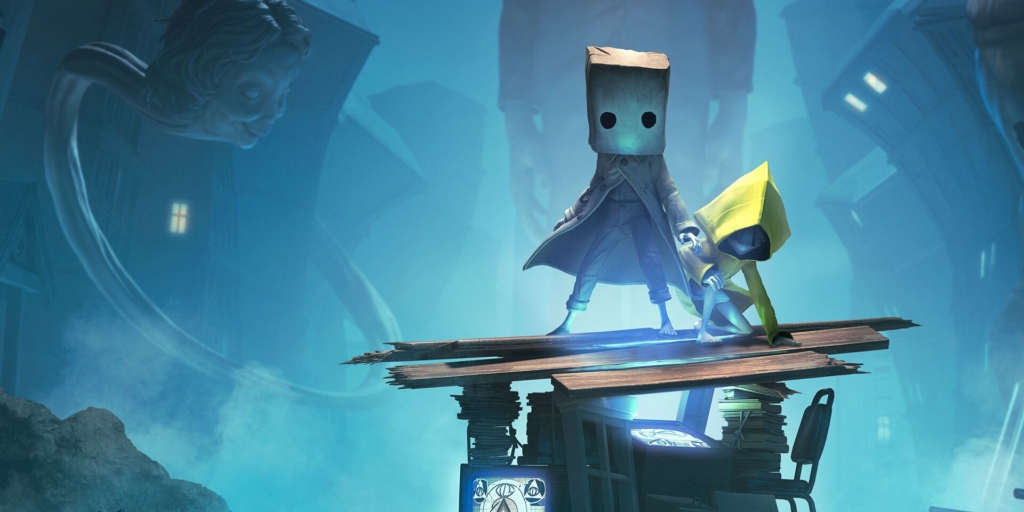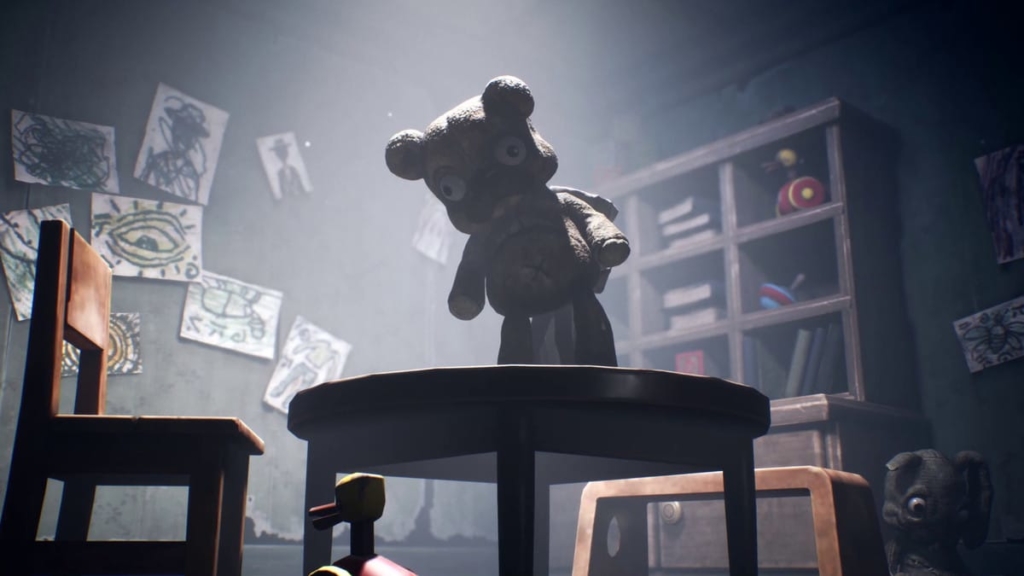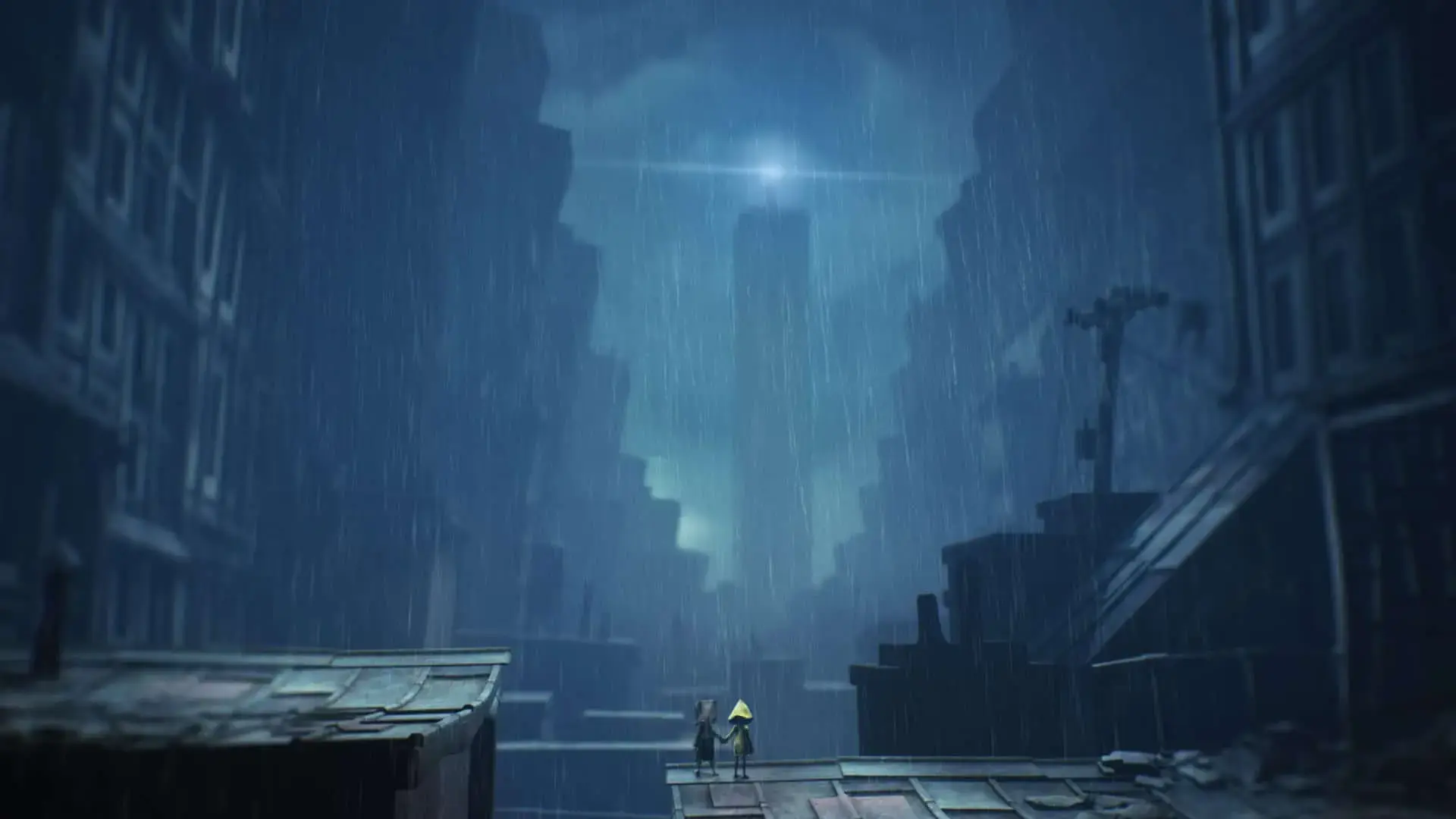Little Nightmares 2 Review – Is it Worth Playing on the Switch Lite?
-
Intriguing style and design that builds an intense and frightening world
-
Co-op puzzling with a high-anxiety twist
-
A story without much payoff
-
Occasionally annoying movement in the 3D space
Little Nightmares 2 offers even more of what fans liked in the original game. In an enormous, grotesque landscape, I took the miniature-sized main character, Mono, on a dark stroll through the horrors and puzzles of Little Nightmares 2. Bandai Namco Entertainment has found a real hit in their Little Nightmares side-scroller series, presenting it as a 3D platformer.
The second instalment of their adventure suspense game was released in February 2021 on the Nintendo Switch and Nintendo Switch Lite. After playing the first game on PC, I was impressed with how the mechanics and graphics translated onto my much smaller (in many ways) Switch Lite console.
A Story Lost in Transmission Along with Mono
Nintendo describes this game as a “charming horror”, but I don’t feel that quite captures the tense and horrific surroundings you’re immediately cast into in the story of Little Nightmares 2.
I started running through the misty, dank, squelching forest and then the creaky rooms with stuffed bodies set out in a freakish diorama. My first thought? I feel like I’m behind the scenes of The Evil Within while the crazies are wandering around, setting up their horror scenes and waiting for the hero to wade through. That’s a feeling the game successfully injects through every scene, every dark setting.

Even as I realised that my character, Mono, was trapped by the transmission coming from a distant tower, it didn’t feel like that was my main purpose. At no point does Little Nightmares 2 have that sense of questing adventure that you normally get from narratives that focus on getting to a particular destination. When I found Six, the little girl in the yellow raincoat from the first Little Nightmares game, I felt more invested in Mono’s journey because it forces you to rely on her almost co-op mechanics.
Once Six and Mono started working together to make it to the Signal Tower, I expected some more of the storyline to be revealed—perhaps give players the answers we’ve been looking for. Theories abounded online about whether the game was a metaphor for child abuse. That makes sense when you look into the atmosphere, the main characters, and even the minimalist mechanics. The Little Nightmares 2 world is oversized, with the ‘adults’ shown as lunging, babbling giants.
The characters Six and Mono are comparatively tiny to their surroundings, and both of them are designed to look like little children wearing their favourite outfit. The entire game consists of the player working past the restrictive up, down, left, right movements, figuring out puzzles to make it through.
While every scene and level we encountered brought fresh enemies and high-stakes tension, it didn’t bring much of a deeper storyline to the forefront. That’s a shame for a game that feels like a title of AAA quality.
I love the idea that the Six and Mono are playing this all out in their imaginations. It’s one of those cheesy, ‘and it was all a dream’ kind of scenarios, but I hope the creators really did intend this to be an insight into how frightening it is to navigate the world as a small child. If you put the fan theories aside, though, it’s clear the story isn’t the highlight for this game. Mono’s journey isn’t epic, but it is intriguing, exciting, and thought-provoking.
Platforming with a Little Bit of Spice
I can’t talk about the gameplay of Little Nightmares 2 without recounting one of the scariest chases in the game. There’s a moment shortly after you discover Six, where you’re moving through the levels, already in awe at the horrific scenery (like a grandma made of pillows stitched together, sat upright like a real person?). You slouch, hand-in-hand, through the foreground of what feels like a home-made butchery.
In the background, I saw with horror that a grotesque ‘adult’ was actively chopping and pulling away at something that sounded distinctly like twisting a head off of a body. I slowed Mono’s pace and crept past the computer-controlled character of my nightmares. We made it past some tricky co-op puzzles to get out of earshot, but at one point, it was inevitable that the adult was on to us and giving chase!
We scarpered out of the building as the adult chased after us with his shotgun raised. I found the closest place to hide outside, but he was too close behind us. I’d taken too long to look for a hiding place. The adult killed Mono and Six with one ominous blast. At that point, I realised the Little Nightmares 2 was teaching me to pay attention and make faster decisions in the real-time platform sections.

For the most part, you can take your time figuring out how to avoid traps and scale obstructions, put the real-time scenes were, quite literally, a killer. This added level of difficulty made the game more interesting for me than if it was pure side-scrolling. The high-anxiety real-time moments also serve to speed up the story, which I think works in the game’s favour. There are only so many ladders and boxes you can climb before wondering what’s next.
The steady flow of attention-grabbing scenery is the main attraction, though. Even while playing on a Nintendo Switch Lite, with its much smaller resolution and far inferior graphics you get from PC and the other consoles.
The lighting, in particular, is clever. While your characters will mostly remain in the foreground, they’re not always in the light and camera focus. Space looks and plays very much like you’re on a theatre stage, stepping through each set as the stagehands swap out the props and actors seamlessly. Sometimes the only light in the room will be from an overhead bulb, illuminating a disgusting gathering of pieced-together humans that could easily be made from cloth or skin. There’s no telling.
The important lesson I learned while appreciating my surroundings was to look and not touch. The feeling you get throughout this game is that you want to see more, but you’re scared to step closer. It’s that morbid curiosity that frequently got me killed by a trap or chased by a non-player character.
Co-op Puzzling has Never Looked so Creepy
The feeling I got when I played Little Nightmares 2 was that an overly sweet children’s rhyme should have been playing on an old jewellery box in the background. It captures a sense of trepidation and inevitable fright uniquely, even aside from its gripping art design.
Mono and Six’s progression and motivation to keep moving toward the signal tower is never verbally, or out-and-out acknowledged. We just know they need to get out of this transmission. To do that, they have to jump, sneak, crouch, and manipulate their surroundings in a bunch of creative ways. The creators did a fantastic job of giving variety to the way you interact with the world around you.
Once you’ve teamed up with Six, the smart AI will work with you to get you through each area. It did feel like I was playing with another person at times because both the character animation and intelligent computer combined perfectly.
Six will sometimes give you hints for how to tackle an obstacle if the AI thinks you’re hesitating or repeating something that’s not working. This tutorial-style dialogue somewhat breaks the fourth wall and the illusion that her character is a real person, but it is handy in the context of hidden objects and puzzles. Other times, Six will be able to give you a leg up to another platform, but she won’t take executive decisions.

The co-op puzzling is a fun experience, similar in its essence to games like Portal 2 and the Trine series. The puzzles aren’t ridiculously hard, especially if you wait a minute to let Six give you a hint, but traps and pitfalls are frequent, and sometimes the only way to find them is by dying to them.
Dying isn’t that big of a deal in Little Nightmares 2. The game auto-saves at intuitive moments and quite often, so if you die, you know you’ll only be replaying a few seconds or so of gameplay to get back to the obstacle that killed you. I enjoy games like this that aren’t forgiving—they’re just mindful of your patience and how annoying it is to have to replay the last five minutes of a game repeatedly. If you’re coming out of another dark game like Dark Souls that just doesn’t care how many times it makes you rage, the auto-save mechanic of this game will be somewhat of a relief.
What’s the Verdict?
Little Nightmares 2 has the stylistic finish and bug-less playthrough of a solid AAA-developer title. There isn’t much here in terms of complex narrative and replay value, but I loved how it delivered its scares through the visual and audio, instead of relying on jumps and cutscenes. The clever teamwork and perspective are immersive and just plain fun, even if the 3D space sometimes makes you feel like you haven’t put the right glasses on. The horrifying world that Mono and Six have to travel through hopefully won’t give me real nightmares, but who doesn’t love a little scare?

